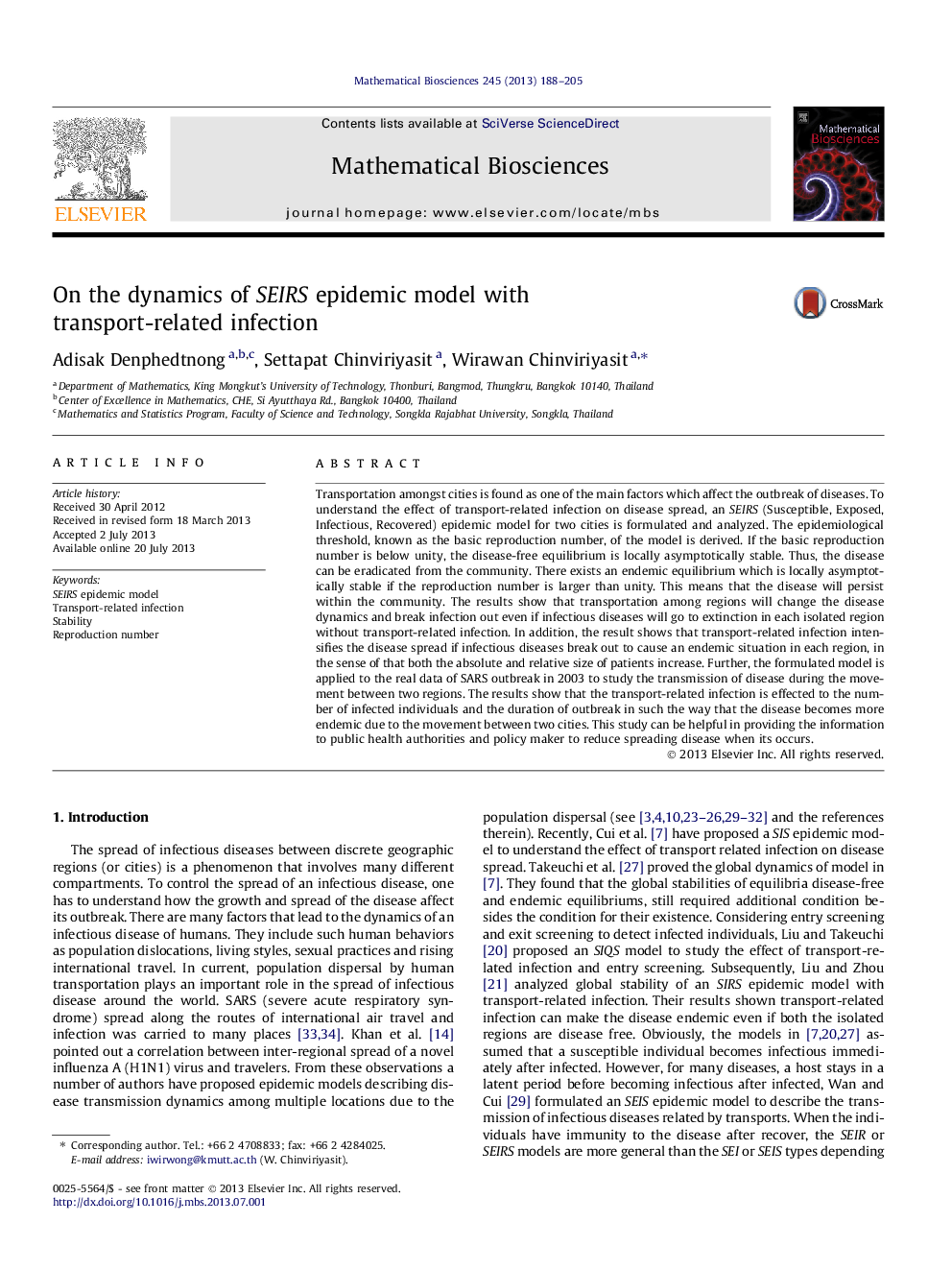| Article ID | Journal | Published Year | Pages | File Type |
|---|---|---|---|---|
| 6372090 | Mathematical Biosciences | 2013 | 18 Pages |
Abstract
Transportation amongst cities is found as one of the main factors which affect the outbreak of diseases. To understand the effect of transport-related infection on disease spread, an SEIRS (Susceptible, Exposed, Infectious, Recovered) epidemic model for two cities is formulated and analyzed. The epidemiological threshold, known as the basic reproduction number, of the model is derived. If the basic reproduction number is below unity, the disease-free equilibrium is locally asymptotically stable. Thus, the disease can be eradicated from the community. There exists an endemic equilibrium which is locally asymptotically stable if the reproduction number is larger than unity. This means that the disease will persist within the community. The results show that transportation among regions will change the disease dynamics and break infection out even if infectious diseases will go to extinction in each isolated region without transport-related infection. In addition, the result shows that transport-related infection intensifies the disease spread if infectious diseases break out to cause an endemic situation in each region, in the sense of that both the absolute and relative size of patients increase. Further, the formulated model is applied to the real data of SARS outbreak in 2003 to study the transmission of disease during the movement between two regions. The results show that the transport-related infection is effected to the number of infected individuals and the duration of outbreak in such the way that the disease becomes more endemic due to the movement between two cities. This study can be helpful in providing the information to public health authorities and policy maker to reduce spreading disease when its occurs.
Related Topics
Life Sciences
Agricultural and Biological Sciences
Agricultural and Biological Sciences (General)
Authors
Adisak Denphedtnong, Settapat Chinviriyasit, Wirawan Chinviriyasit,
